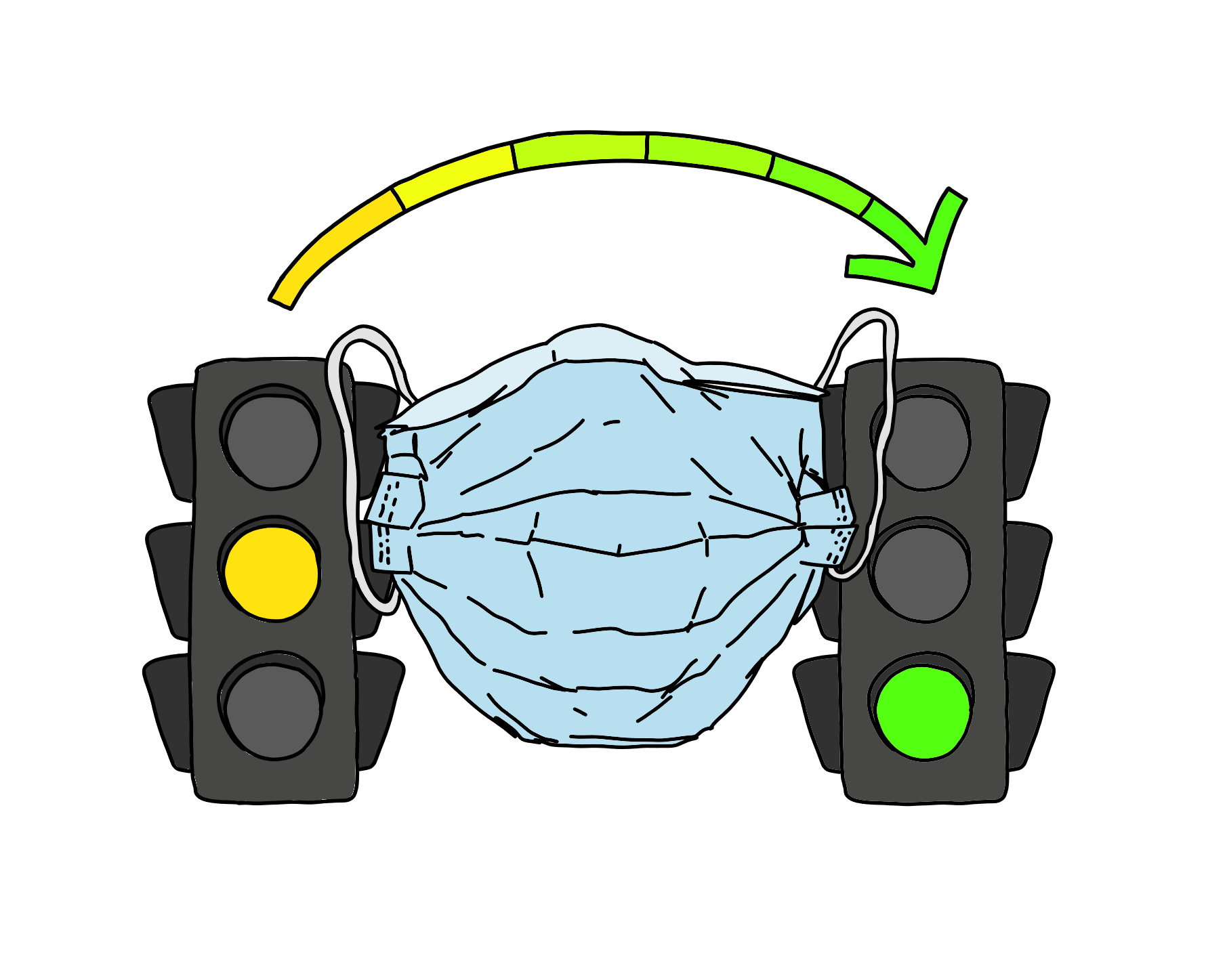
Anasthasia Shilov, Illustrations Editor
The University’s COVID-19 alert level has changed from yellow to green, signaling that the campus has made it through the arrival period with a low rate of viral infection.
On Wednesday, COVID-19 Coordinator Stephanie Spangler emailed the Yale community with an update on the COVID-19 alert level of the University. She stated that the beginning of the semester was one of the riskiest periods for viral spread, as students and faculty were returning to campus from varying locations around the country and world.
However, because of strict adherence to public health protocols by the Yale community, the University has been able to keep viral transmissions low. As a result, the alert level was moved from yellow to green, the lowest alert level on the scale used by the University.
“Because we have passed through the arrival period with a low rate of viral infection and because community members have adopted the Community Compact and Community Expectations not just in letter but in spirit, we have moved to Green,” Spangler wrote in the community-wide update.
According to Spangler, the alert levels are intended to keep the Yale community informed about the state of virus transmission on campus. As per the Yale COVID-19 Statistics webpage, green alert level is coded as “lower risk” and means that “cases are infrequent or sporadic and transmission controlled.” Yellow alert level, the level Yale was at previously, signals a “low to moderate risk.”
Spangler cautioned that the change in alert level does not mean that students and faculty should let their guard down. She emphasized the importance of limiting the size of gatherings and maintaining a proper physical distance. In the community update, she stated that if the campus continues to see “great results regarding viral transmission,” the University may relax restrictions in the future.
“Our ability to control the transmission of COVID depends heavily on each community member’s observance of our preventive health and safety measures, as well as on our screening programs to detect infections quickly and isolate and quarantine affected individuals before infection spreads,” Spangler wrote in an email to the News.
Sten Vermund, dean of the Yale School of Public Health, echoed Spangler’s statements, attributing much of the University’s success in limiting the spread of COVID-19 to five basic factors: mask-wearing, physical distancing, assertive hand and service hygiene, small group gatherings and optimizing air quality indoors.
He added that maintenance staff are working hard to survey, evaluate and retrofit HVAC systems in Yale campus buildings to ensure safe air quality.
Vermund highlighted that these five factors are inseparable from proper testing and contact tracing. He noted that frequent testing has allowed infected individuals and any of their close contacts to effectively quarantine, thus greatly reducing the spread of the virus.
“It’s really a combined effort,” Vermund said. “If we were ignoring the small group rule, we were ignoring the masking, physical distancing and hygiene, and we weren’t paying attention to air quality, then we would be surging our testing services and overwhelming our isolation and quarantine abilities. You’d see the University close pretty fast.”
Vermund cited a July study by Professor of Public Health and of Management A. David Paltiel and Harvard University researchers as part of the inspiration for the current testing regimen.
According to the study, safe reopening of college campuses may require screening students every two days, regardless of whether or not they are symptomatic. Yale’s current system prescribes that students be tested twice a week.
Vermund highlighted that although biweekly testing and quarantine may pose an inconvenience to infected individuals and their close contacts, it is essential for the greater good.
“We want to maintain the fidelity of our interventions, maintain the discipline and social cooperation… because what we are doing is protecting ourselves but also protecting all of our colleagues here at the University and our community neighbors in New Haven,” Vermund said. “I think that the move to green simply reflected the favorable statistics that have come on.”
According to Yale College Council President Aliesa Bahri ’22, this change to the COVID-19 alert status should not lull community members into a false sense of safety.
Bahri believes this recent development should remind the campus community of the importance and effectiveness of abiding by public health standards.
“Low COVID-19 rates should not be perceived by students as a reason to be less cautious,” Bahri wrote in an email to the News. “In fact, they only signal how imperative it is for students to abide by the community compact and public health guidelines. We’re all in this together. Let’s step up to the challenge of keeping our community safe by holding ourselves and our loved ones accountable.”
As of Oct. 4, the University has reported 27 positive COVID-19 cases since Aug. 1, an increase of seven cases over the past week.
Julia Bialek | julia.bialek@yale.edu
Sydney Gray | sydney.gray@yale.edu







